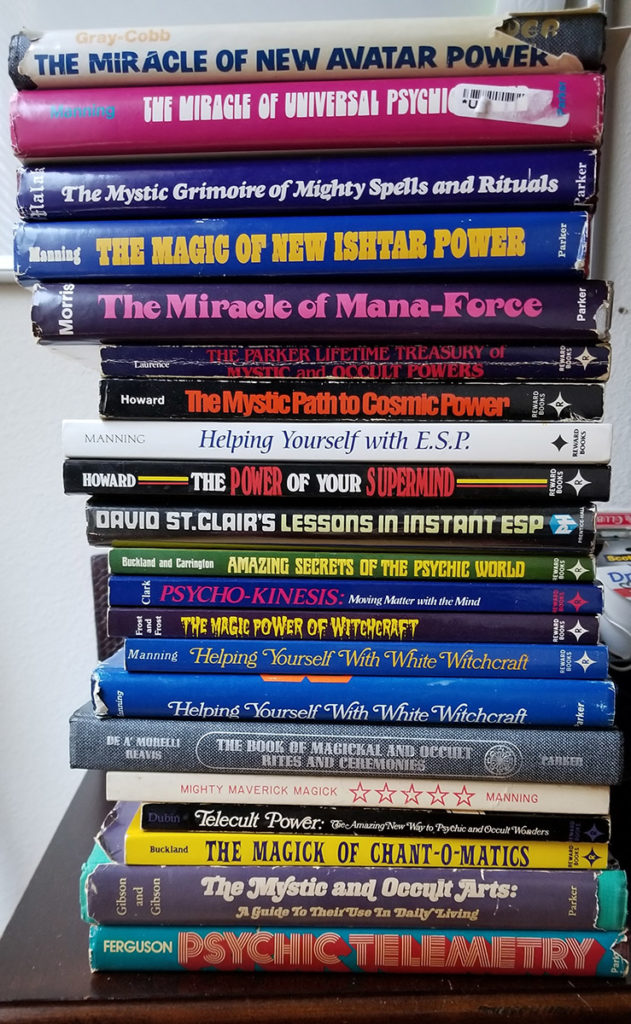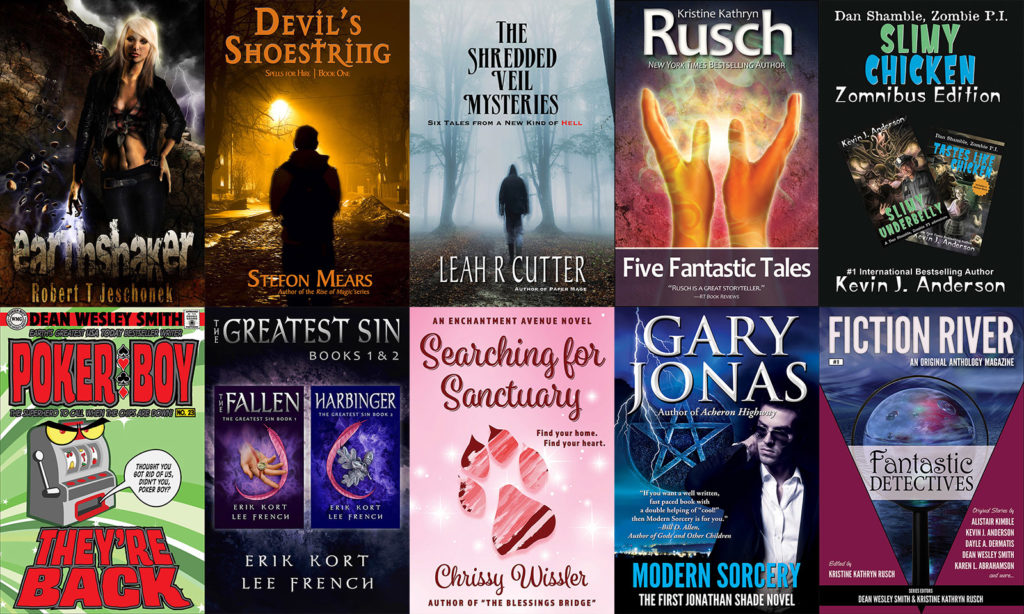Mega Magic for Mighty Magicians!

People love to ask writers about our research. And it’s true that some stories require me to read nonfiction books and websites, watch videos and so forth, in order to get the stories right.
Tell you a secret though. Most of our “research” is just stuff we enjoy reading and watching anyway.
For example, I’ve always loved occult books. All kinds, all eras. From the old ceremonial grimoires like the Key of Solomon to the modern approaches like chaos magic and its ilk. I started reading them when I was a kid and just never stopped. They fire my imagination as much as any fantasy novel. Maybe more.
My enjoyment even extends to a peculiar subcategory of “modern grimoire” published mainly in the 1970s by two houses: Parker Publishing and Prentice Hall. (Most of the Parker books had trade paperback editions published by Reward Press.)
I call them the self-help spellbooks.
These books read like late-night infomercials. They promise outrageous results based on fairly minimal investments of time and effort. Not to mention minimal research – pick up most occult books and they read as though the writer expects the reader to learn the theory as well as the practice.
The self-help spellbooks don’t teach theory. Their general approach is “don’t worry about why it works, just try it and watch it work!”
And their examples are just wild. I made this one up, but it’s only a slight exaggeration from actual examples in these books: Cindy J. of Johannesburg was living on the streets, mired in self-loathing and down to her last penny when I gave her the Mega Magic Chant (only one of the powers you’ll find in this book). When I heard from her three weeks later, she was overflowing with smiles and self-confidence, and living in a block-long high-rise condominium in a chichi neighborhood with her new billionaire boyfriend who dotes on her and buys her everything she could ever ask for.
Those books entertain the hell out of me. I read them just for fun. They have titles like The Miracle of New Avatar Power, The Magic of New Isis Power, The Mystic Grimoire of Mighty Spells and Rituals, Helping Yourself with White Witchcraft and so on.
And as you can see by the picture above, over the years I’ve accumulated quite a number of them.
For the longest time, that was all I really did with them. Collect them and read them.
Until I started writing the Spells for Hire series.
The Spells for Hire series is urban fantasy set in modern-day Portland, Oregon. The star of the series is Heath Cyr, who practices a form of American folk magic known as conjure, rootwork, or Hoodoo.
But one of the things I wanted to do in this series was play with as many different types of actual magical practices from this world as I could think of. For example, Heath’s girlfriend Nariko practices Shugendō, which is both a system of magic and a religion (forgive me for taking shortcuts in this post, for purposes of explanation).
But then there was Colin. Also known as Weird Colin. Heath’s best friend, and a major source of comic relief in the stories.
Colin was the perfect excuse for me to take all those wonderful self-help spellbooks and bring them into fiction. To make up goofy titles and spells, and have all the “serious” practitioners in the book complain about how Colin and only Colin can get this stuff to work.
But it all works for Colin. And just writing his magic makes me smile.
—–
If you’re curious to read the adventures of Heath, Nariko and Colin (and seeing this magic in action), right now the first book, Devil’s Shoestring, is available at a serious discount as part of the Fantasy Detectives Storybundle, along with nine other great fantasy titles.


